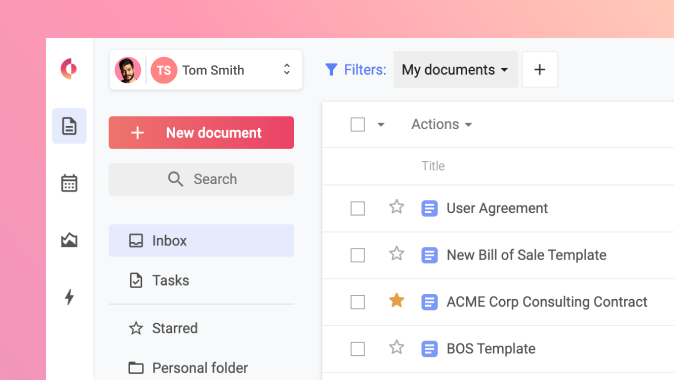Creating, Reviewing, and Managing Contracts in the Digital Age
The world of contract management has changed. Here’s how modern businesses are managing contracts online.
Contract management is no longer just a record of what has happened within a company, but a key factor for all organizations, especially enterprise companies as they focus on mitigating business risk, unnecessary costs, and maximize revenue. Yet not every contract management platform is equal. Some solely serve as a repository, where others don’t have all the necessary negotiating or editing features. To ensure that an organization is able to accomplish their goals, it’s critical to have a contract management platform that supports that.
There are a few key parts to the lifecycle management of contracts, including drafting, negotiation, and post-signature management. Here are best practices and essential features for contract management in the cloud.
Creating Contracts
A relationship begins with the first draft of a contract. Making meaningful business partnerships is an important part of any company, and a contract is usually the first introduction of this. In the past, contracts often began on a Word document or PDF, sometimes from a template that was sent over by Legal, and other times purely from scratch. As companies seek to create more and more relationships faster while maintaining the same amount of meaning and legality, having a platform in place to help streamline contract creation is critical for success. Preset templates ensure the most current clauses are used and give Legal full visibility into new and existing contracts. A professional, intuitive interface allows customers and partners to more easily work towards making that relationship official.
Reviewing Contracts
The process between the creation of a contract and before it is signed can be one of the most challenging if it’s not done correctly. Having a single source of truth for all documents, people, and processes is the first step. From there, all relevant parties need to make sure they have visibility into the contract at the right time.
Contracts should always be reviewed by the legal team before they are signed and put into effect. Especially after negotiations and redlining take place, making sure those teams still have insight into changes and are able to review efficiently is essential. Changes should be tracked in real time with time stamps, usernames, and a comprehensive audit trail.
Managing Contracts
Once a contract is signed, there are other steps that need to occur, such as tracking, setting up reminders, and the occasional amendment. Knowing the financial terms and conditions should be part of where the contract lives. Storage shouldn’t just be a repository, but a dynamic way of keeping documents organized and stored safely. A contract management platform should have the capability to do all of these things, from deadline alerts to bank-level security. This fundamentally changes the role of all teams who work with contracts—from Legal to Procurement—allowing them to work faster while maintaining a higher level of safety and compliance.
Contracts are the DNA of an organization; they build relationships and serve as the official agreement to generate revenue and help teams work efficiently. As today’s business centers around digitalization, moving faster, and working smarter, contracts are a key part of making sure workflows are streamlined and processes are effective.



